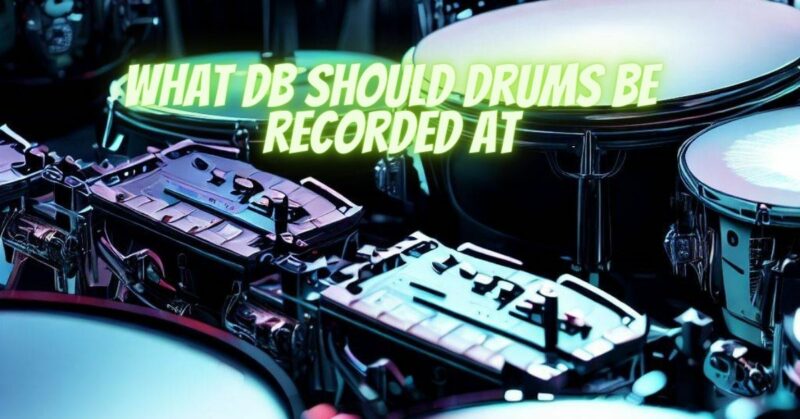Recording drums is a critical aspect of achieving a polished and professional sound in music production. One of the key factors that can greatly impact the quality of your drum recordings is the appropriate decibel (dB) level at which you record them. The dB level not only affects the clarity and dynamics of the drums but also influences the overall mix of your music. In this article, we will delve into the considerations and guidelines for determining the ideal dB level for recording drums.
Understanding Decibels (dB) and Dynamic Range
Decibels (dB) are a unit of measurement used to express the intensity or power of a sound. In the context of recording, dB levels indicate how loud or soft a sound is being captured. It’s important to understand that dB levels are logarithmic, meaning that a small change in dB value corresponds to a significant change in perceived loudness.
Dynamic range refers to the range between the quietest and loudest parts of a sound. Drums have a wide dynamic range due to the various components involved, such as cymbals, snare, kick drum, and toms. Maintaining a balanced dynamic range during recording is crucial for capturing the nuances and impact of each drum element.
Factors Influencing dB Levels for Drum Recording
- Drum Type and Intensity: Different types of drums produce varying levels of sound intensity. A snare drum will generally produce a higher intensity sound than a floor tom. The playing intensity of the drummer also affects the dB levels. Harder hits result in higher dB levels.
- Microphone Placement: The placement of microphones around the drum kit has a direct impact on the dB levels. Close-miking techniques, where microphones are placed near individual drum components, may result in higher dB levels due to the proximity to the sound source.
- Room Acoustics: The acoustic properties of the recording environment influence the amount of natural reverb and ambient sound captured by the microphones. A reflective room might contribute to higher perceived loudness and affect the decision on recording levels.
- Preamps and Gain Settings: The gain settings on your preamps determine how much the microphone signal is amplified before reaching the recording device. Setting the gain too high can introduce distortion, while setting it too low can result in a weak signal.
Recommended dB Levels for Drum Recording
While there is no one-size-fits-all answer to the ideal dB levels for drum recording, there are general guidelines that can serve as a starting point:
- Peak Levels: Aim for peak dB levels between -6 dB and -3 dB. This provides some headroom to accommodate sudden transients and prevents digital clipping, which can result in distorted recordings.
- Average Levels: Keep the average level of the drum recording between -12 dB and -6 dB. This ensures a healthy balance between individual drum components and prevents excessive compression during the mixing stage.
- Snare and Kick Drum: These central components of the drum kit usually benefit from slightly higher dB levels to capture their impact and presence. Aim for peak levels around -3 dB to -1 dB for snare and kick drum hits.
- Toms and Cymbals: Toms and cymbals can have a more dynamic range. Peaks for these components can be around -6 dB to -3 dB to capture their natural dynamics.
Using Your Ears
While technical guidelines provide a foundation, trusting your ears is crucial in achieving the desired sound. Listen carefully during recording to ensure that the drums are not overloading the microphones or sounding too weak. Adjust the gain settings and microphone placements accordingly to achieve a balanced and dynamic drum sound.
Finding the right dB level for recording drums requires a combination of technical understanding and artistic judgment. Balancing the dynamic range, considering the individual components of the drum kit, and maintaining appropriate headroom are key factors in achieving high-quality drum recordings. Remember that experimentation and adaptation to different musical styles and recording environments are essential for producing captivating and professional drum tracks.

